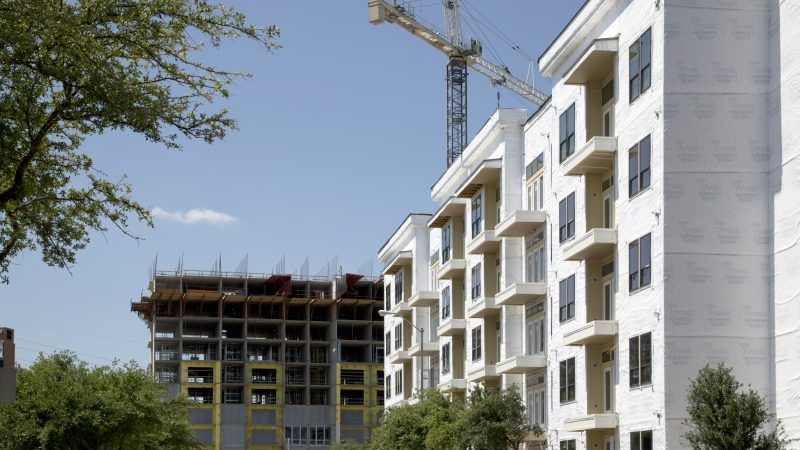California Housing Reform Bill Survives a Crucial Vote, but at What Cost?
SB 50 is starting to look less like a bold reform, and more like a marginal improvement on a dreadful status quo.

California housing reform took a big step forward yesterday when a state Senate committee voted to advance a controversial upzoning bill that would allow the construction of four- and five-story apartment buildings in areas where only single-family housing is currently allowed.
In a 6-1 bipartisan vote, the California Senate's Government and Finance committee approved SB 50. The bill, sponsored by Sen. Scott Wiener (D–San Francisco), would upzone residential land near frequently serviced transit stops and job centers.
Zoning for more, denser housing, the bill's proponents say, will spur new housing construction, and help arrest the state's ever-climbing rents and home prices.
The bill "will help relieve California's acute housing shortage…make housing more affordable, increase the supply of low-income housing, and reduce pressure to create more sprawl and build in wildfire zones," reads a press release issued by Wiener's office shortly after the vote.
Getting committee approval for the bill is a marginal step, but a significant one nonetheless. A very similar upzoning measure introduced last year by Wiener was killed in its first committee hearing.
Yesterday saw SB 50 survive, but only after a number of substantial amendments.
The bill will now allow fourplexes to be built throughout the state on vacant residential land by-right (meaning no discretionary government approval is required). This will pave the way for the construction of a lot more "missing middle" housing.
Aside from this fourplex provision, most of yesterday's changes will limit the scope of SB 50. One amendment exempts coastal cities of less than 50,000 people from most of the bill's upzoning provisions. Historical districts also got their own carveout, as did counties with fewer than 600,000 residents.
The definition of what counts as a high-frequency transit stop was also pared back.
All these amendments add complexity to an already complicated bill. Wednesday's committee carveouts also come in addition to onerous demolition controls and affordable housing mandates already included in SB 50.
Wednesday's changes are politically expedient, and probably necessary to ensure the bill's continued progress through the legislature. With the exception of the fourplex amendment, however, they all water down the impact Weiner's legislation can be expected to have on housing affordability.
As Steven Greenhut pointed out in a recent Reason column, SB 50 also does nothing to allow new housing on rural- and agricultural-zoned land at the fringes of California's cities. That's by design, as a major purpose of Weiner's bill is to encourage more transit ridership and combat sprawl.
The result, however, is that a big opportunity to allow for the construction of cheaper suburban housing was missed.
By hacking away at some of California's restrictive local zoning codes, SB 50 would be a net benefit to both the state and its hard-pressed renters. Nevertheless, as more and more carve-outs and exemptions are added, the bill starts to look less like a bold reform, and more like only a marginal improvement on the dreadful status quo.
Rent Free is a weekly newsletter from Christian Britschgi on urbanism and the fight for less regulation, more housing, more property rights, and more freedom in America's cities.
Show Comments (13)